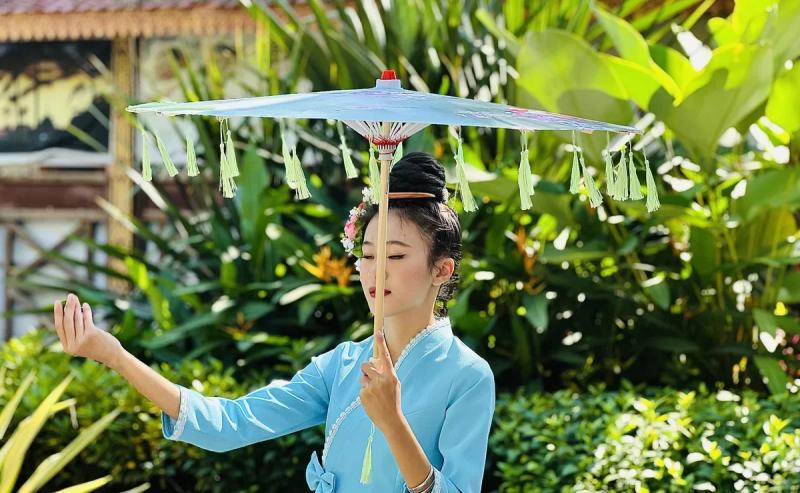
In the spring of 2024, tours in Yunnan Province will appear in the Chinese range of tour operators. On the eve of the launch of the programs, the correspondent of Vestnik ATOR visited the province at the invitation of the Ministry of Culture and Tourism of China and the National Tourism Office of China in Moscow and is ready to share what she saw.
There are always thousands of details in every country, which eventually create a unique overall atmosphere. The Chinese province of Yunnan, bordering Vietnam, Laos and Myanmar, approaches this issue with all the secrecy. She looks right into the soul of tourists.
The Yunnan “journey of the soul” of Russian tour operators and journalists lasted 10 days, which seemed to fit a lifetime. A real life filled with music and dances of ancient peoples, encounters with a variety of animals, eating Chinese delicacies and the most sensual landscapes.
LANCANG COUNTY, YUNNAN PROVINCE: PEOPLE, DANCING, SONGS AND TEA
I remembered a situation that vividly demonstrated the every-second sensations experienced in Yunnan. It happened on the bus, on the way from the airport of Lancang County, where we arrived from Kunming, the main city of the province, to the hotel.
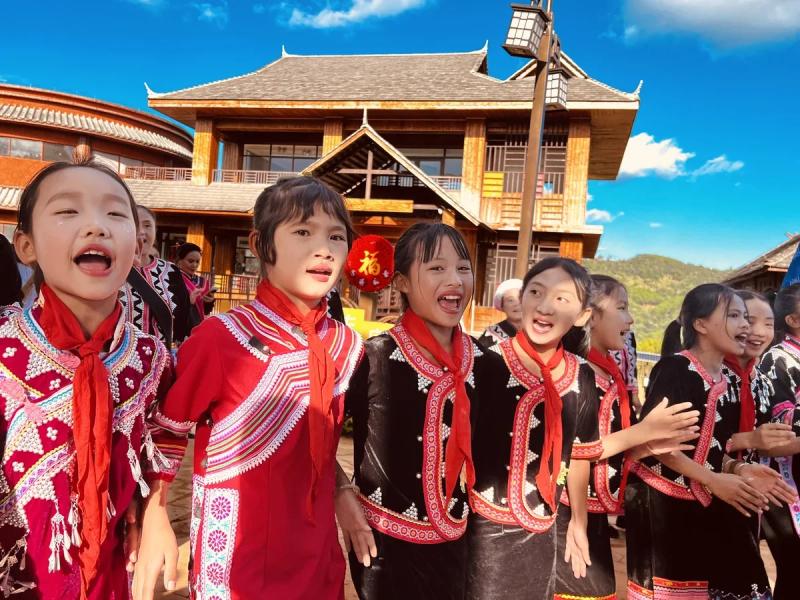
Representatives of the ancient Lahu people in Lancang County, Yunnan Province, China. Photo: ATOR
The whole journey, which took about 40 minutes, the talented guide performed songs of the ancient Lahu people. This ethnic group lives in China only on the territory of Lancang. In total, 26 small nations out of 56 nationalities in all of China live in Yunnan. All of them are under government protection.
Looking at the bright outfit of the singer, the eye caught the “free character” of the clock hanging on the bus. The electronic dial claimed that 23:23 was followed by 22:55, and then 00:30.
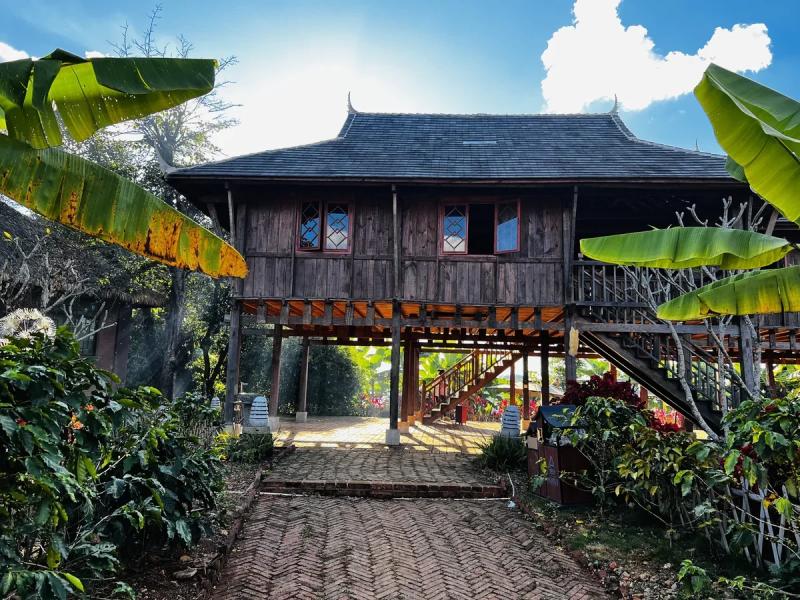
Traditional house of the Lahu people in Laodabao village in Lancang County, China. Photo: ATOR
At that moment, everything fell into place – it turns out that you are not the only one who feels that time in Yunnan is elusive. Not only time, but reality itself. Here it is deformed, erased, reborn into something fundamentally new, previously unseen. Mondays and Sundays, however, do not seem to exist here either. All the most interesting and fun things can happen to you any day of the week.
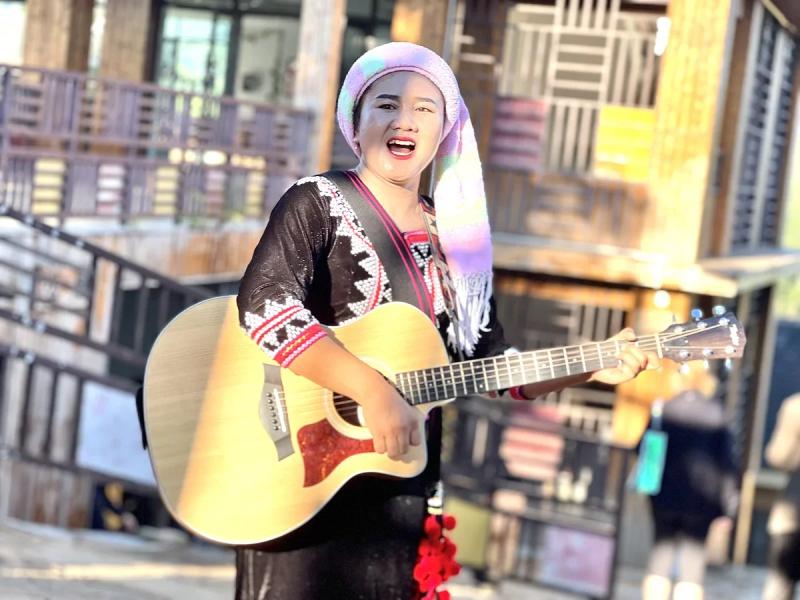
A girl of the Lahu people in the village of Laodabao, China. Photo: ATOR
In the company of representatives of Lahu, it really does not get boring. They love to dance and sing. Lahu is even characterized as “they sing when they talk and dance when they walk.” You can see this in the small village of Lahu Laodabao, which was included in the UNESCO list of Intangible Cultural Heritage sites in 2006, and in 2012 was one of the first to be included in the national lists of traditional villages in China.
To get to the village of Lahu means to open the doors to a cheerful world. Just imagine that a crowd of friendly, bright characters bursts into your measured life and turns everything upside down there.
Video file
And you happily dissolve into this madness and sing along with the people with all your might “Hali ja,khalija,hali Ha hahalija…” (careful: the song is addictive). And after the songs– dancing.

Delicious coffee is prepared in the village of Lahu Laodabao in China. Photo: ATOR
Lahu’s dancing is spectacular. The most famous is the bamboo pipe dance. It is included in the list of national intangible cultural heritage.
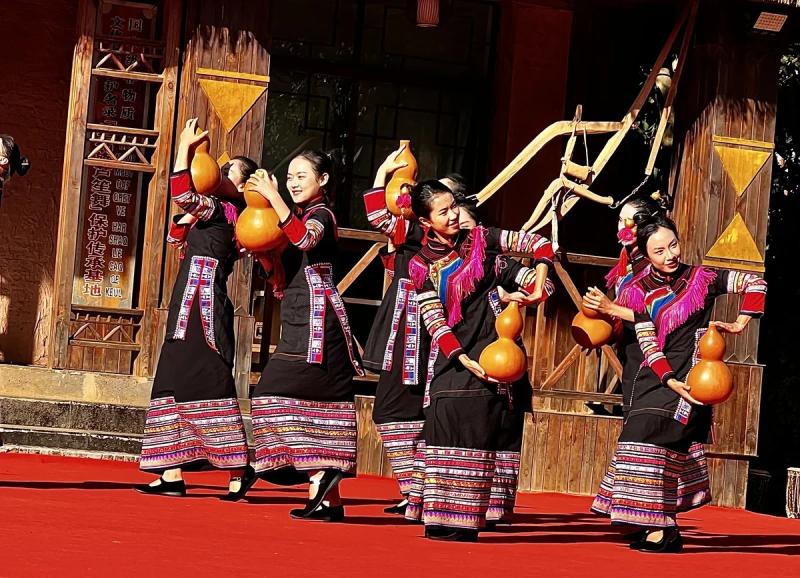
Traditional dance of the Lahu people in Laodabao Village, China. Photo: ATOR
With the help of Lahu dances, tourists are introduced to the traditional culture and art of the people, through dance movements they tell about various episodes from their lives. In the dance, for example, movements are shown demonstrating the planting and harvesting of rice, corn and, of course, tea.
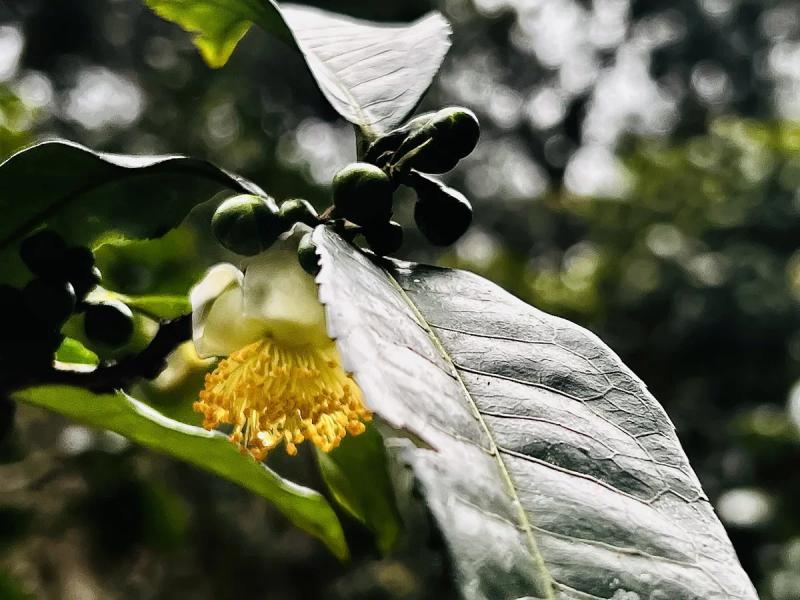
A leaf of a tea tree in the tea forest of Jingmaishan Mountain, Pu’er City, China. Photo: ATOR
Lancang has the oldest tea tree in the world, which is more than 1,700 years old. And on Mount Jingmaishan there is the world’s largest artificially grown thousand-year-old tea forest.
In September 2023, the cultural landscape of the Jinmaishan Mountain Tea Forest, located in Lancang County, Pu’er City, was included in the UNESCO World Heritage List. And it became the world’s first cultural heritage site dedicated to tea themes.
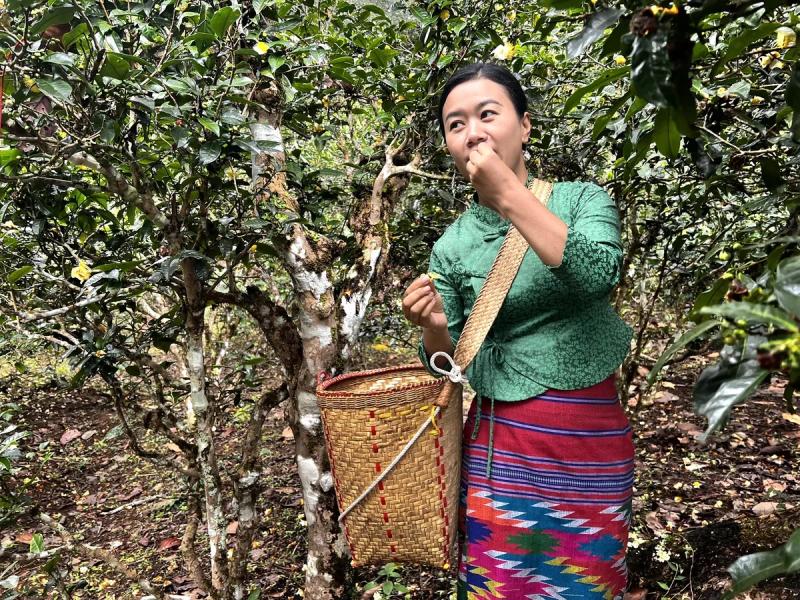
A girl tries tea tree flowers in the tea forest of Jinmaishan Mountain, Pu’er City, China. Photo: ATOR
Anticipating the questions, we will answer that the city of Pu’er got its name in honor of the famous tea variety. Until 2007, this city was called Simao. As for Pu-erh tea itself, it is one of the oldest varieties of fermented tea in China. Its history dates back more than 1,700 years (since the end of the Eastern Han Dynasty).
A variety of tea tree, from the leaves of which the “most real” Pu-erh is then prepared, grows only in Pu-erh. Although, of course, puer is also made in other places, because this is a way of processing tea leaves.
Video file
Walking through the tea forest, included in the UNESCO World Heritage List, is very pleasant. It is fresh, beautiful and there are many tea trees, whose age reaches an average of 100-200 years, and the oldest tea tree in the forest is 1000 years old.
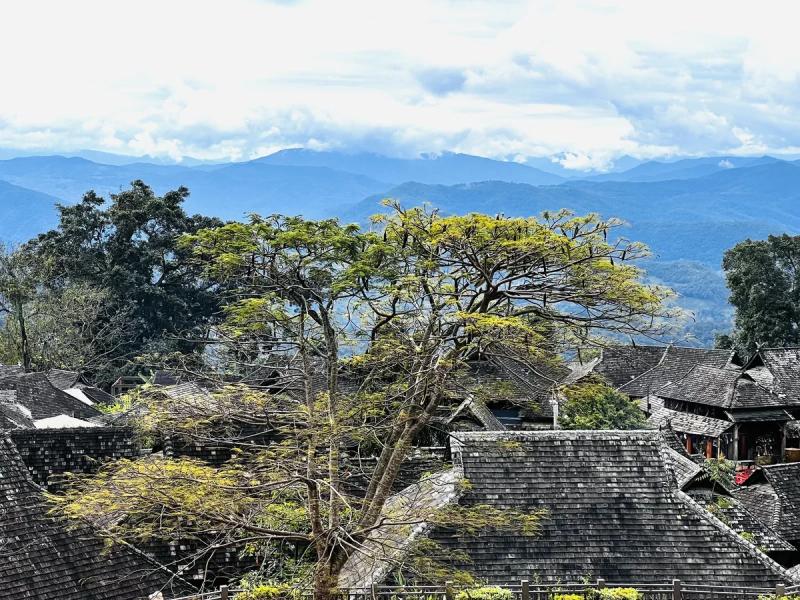
View of the village of the Dai people, China. Photo: ATOR
You can buy pu-erh in shops, or in ethnic villages near the city. The UNESCO World Heritage List, along with the tea forest, includes nine ancient villages inhabited by 5 nationalities – Bulan, Han, Wa, Dai, Han.
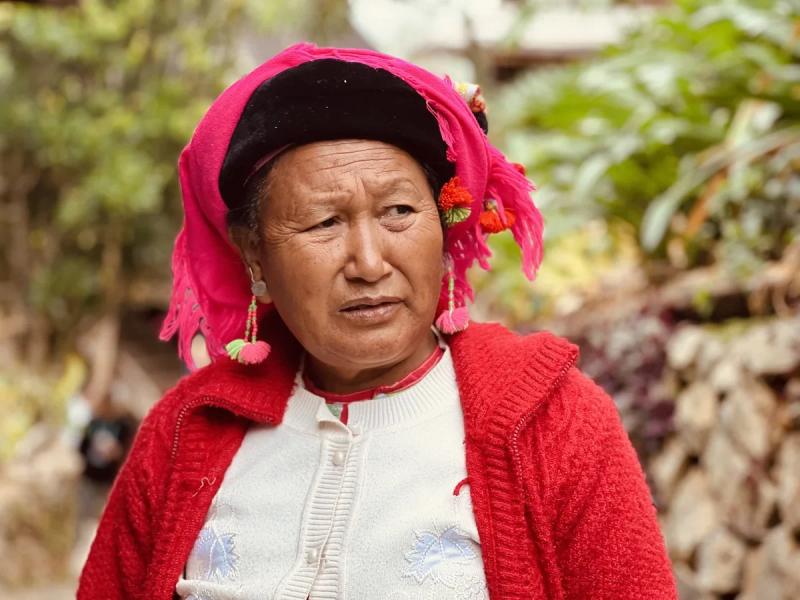
A resident of the village of the Dai people, located near the tea forest on the mountain Jingmaishan, China. Photo: ATOR
In the village of the Dai people, in addition to shopping for tea and coffee, you can enjoy the special aesthetics of antiquity – look at the traditional houses of this people, observe people and freeze with admiration at the sight of a mountain panorama from the height of a Buddhist temple.
XISHUANGBANNA COUNTY: PEOPLE, BAZAAR AND ELEPHANTS
The Dai people, a group of Thai peoples, love peacocks and consider them a symbol of kindness, wisdom, beauty and happiness. The Chinese have a folk “peacock dance”. It is performed during Buddhist holidays and on New Year’s Eve.
Video file
The Chinese celebrate the New Year in April, as it happens in Thailand, but for guests of the traditional village located in the suburb of Jinghong city in Xishuangbanna District, a “water festival” is organized every day, the so-called “rehearsal” of the Thai New Year. This is done in order to introduce travelers to the national traditions of the people.

Thai New Year rehearsal for guests of the Dai village in Xishuangbanna District, Yunnan Province, China. Photo: ATOR
In addition to the “water extravaganza”, guests of the village can visit a Buddhist temple, buy souvenirs made by skilled artisans using ancient technologies, take pictures with beautiful locals, buy fruits and dried fruits.
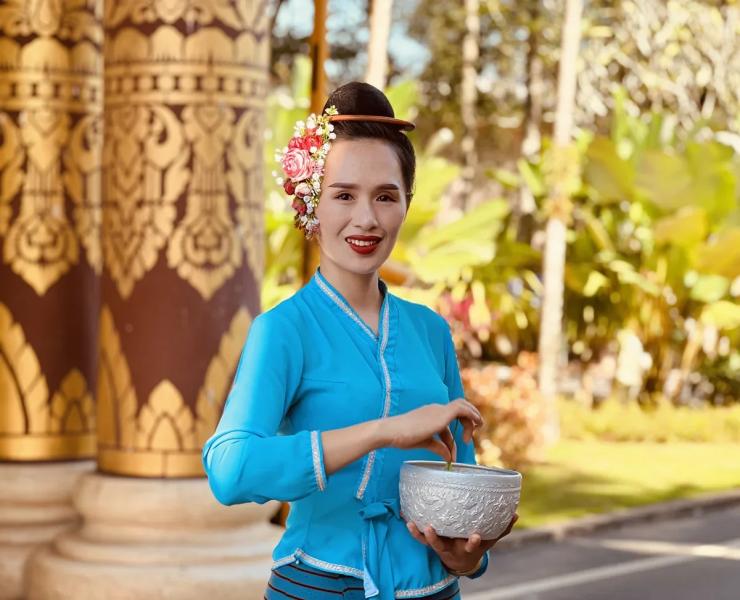
Girl of the ancient Dai nation in Xishuangbanna County, Yunnan Province, China. Photo: ATOR
Pay attention to the dried mango. Many of the band members had never tasted such a delicious mango, even in Thailand. And the taste of local strawberries surpasses the taste of Turkish strawberries.
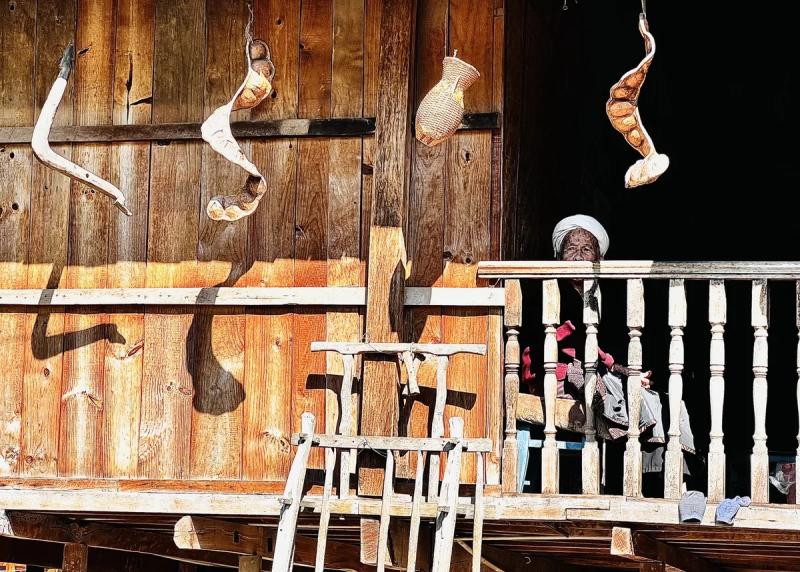
Grandmother of the Dai people in a traditional house, Yunnan Province, China. Photo: ATOR
Continuing the theme of food and circuses is the largest (530 thousand square meters) night bazaar in China, located in Jinghong city of Xishuangbanna County, Yunnan Province.
Tranquility, aesthetics, cleanliness and music are usually not the two words that come to mind when describing Asian night bazaars. But in the case of the Xishuangbanna Bazaar, that’s exactly what happened.
Video file
You see a Buddhist stupa in the bazaar, musicians, beautiful sellers in national costumes, craftsmen making various souvenirs and you are pleasantly surprised by the originality of the place.
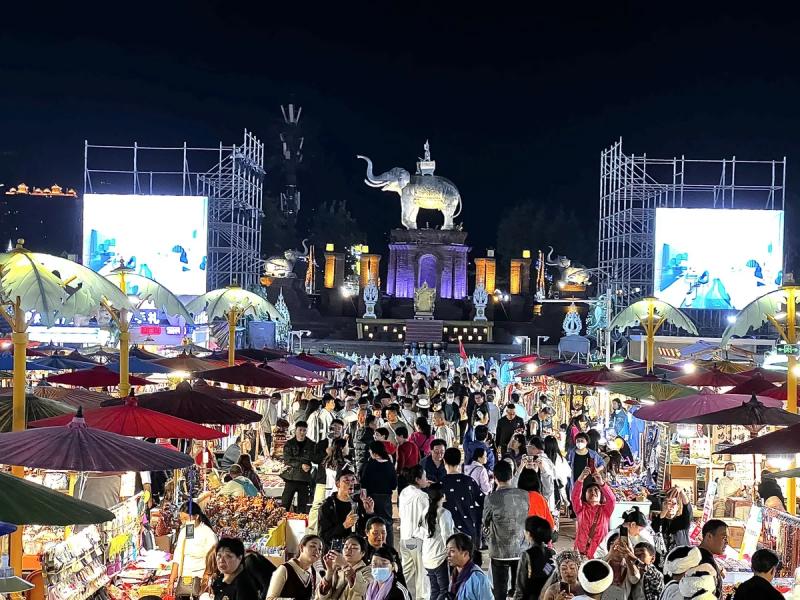
At the largest night bazaar in China, Xishuangbanna County, Yunnan Province. Photo: ATOR
When you realize reality, the state of “I want everything” immediately comes – earrings, bracelets, shoes, fruits, noodles, worms, a dress. And, yes, I want this silver elephant pendant too.
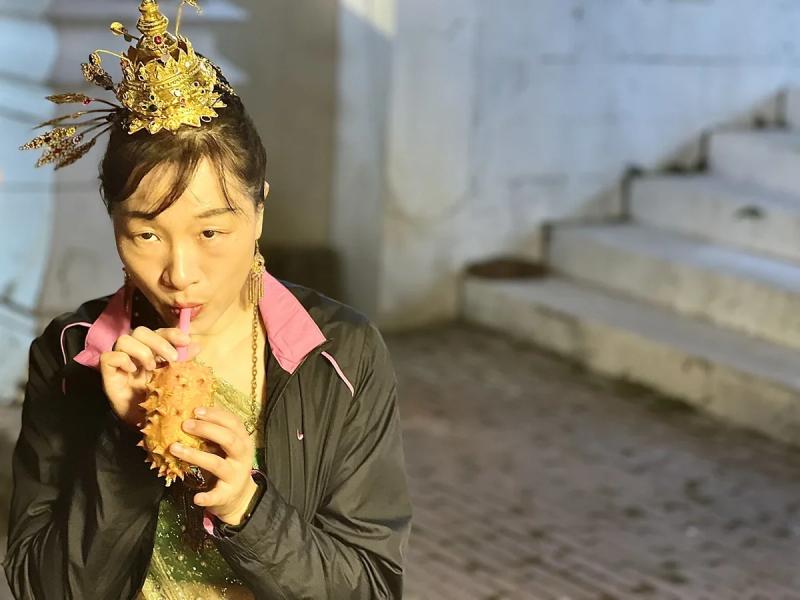
There are very colorful people at the night bazaar in Xishuangbanna District in China. Photo: ATOR
Elephants in China, by the way, live only in Yunnan Province, they can be found in the city of Pu’er, Lincang and Xishuangbanna District. In the Elephant Valley in Xishuangbanna County, if you’re lucky, you can observe the life of wild elephants. There are only 300 of them in China.
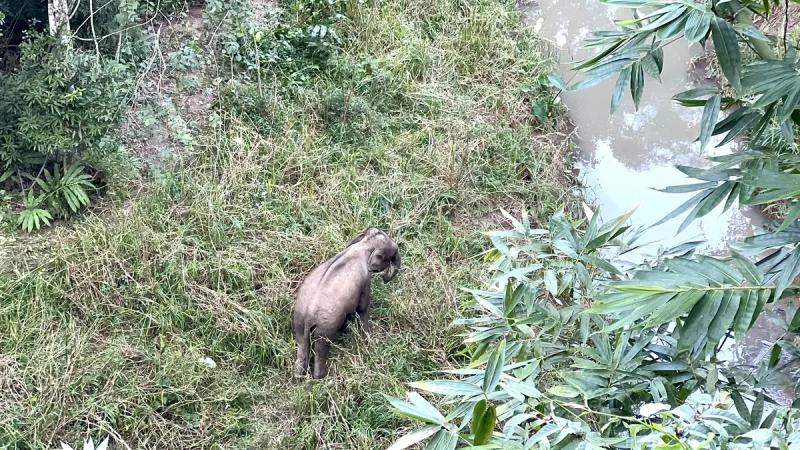
Elephants in Xishuangbanna County, China. Photo: ATOR
In addition to elephants, tourists will definitely meet beautiful butterflies in the park of the same name. And sleepy loris.
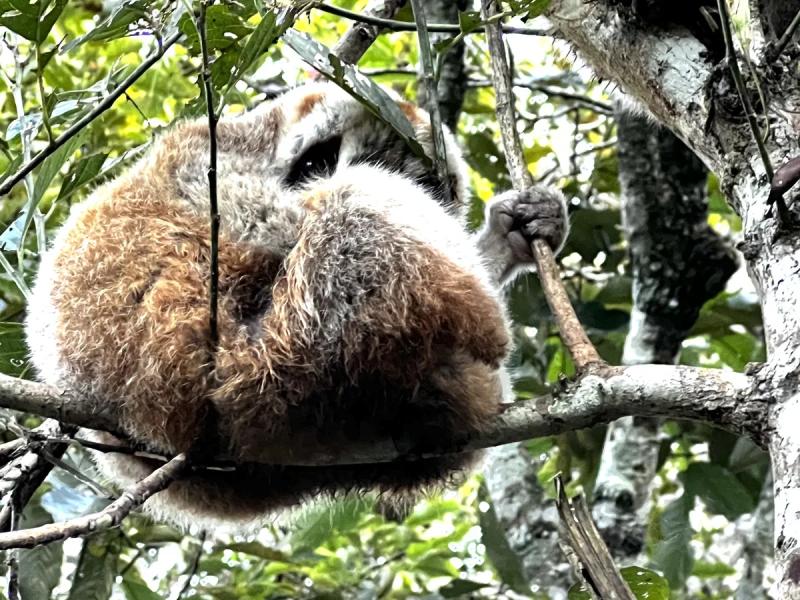
Lori in Elephant Valley in Xishuangbanna County, Yunnan Province, China. Photo: ATOR
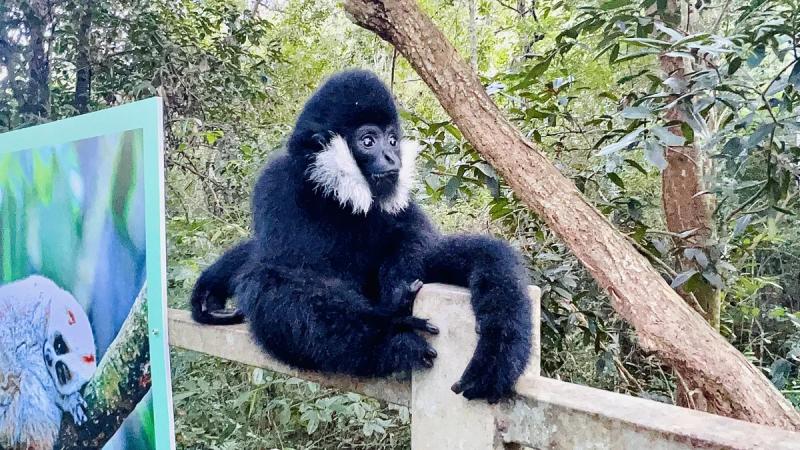
Playful gibbon in Elephant Valley in Xishuangbanna County, province Yunnan, China. Photo: ATOR
Playful gibbon, also monitor lizards, snakes (sitting in an aviary). And there is also a delicious ice cream in the shape of elephants in the park.
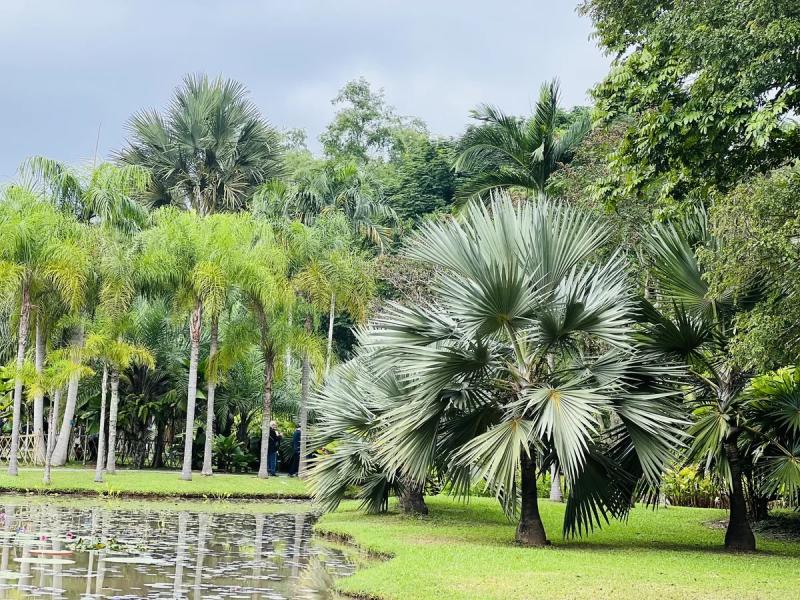
Tropical Botanical Garden in Jinghong City, Xishuangbanna County, China. Photo: ATOR
Beautiful butterflies also fly in the tropical botanical garden with an area of 11.25 square kilometers at the Academy of Sciences of the People’s Republic of China. This tourist area of the state category 5A is located on the Huludao Island of the Loso River in Jinghong City of Xishuangbanna County.
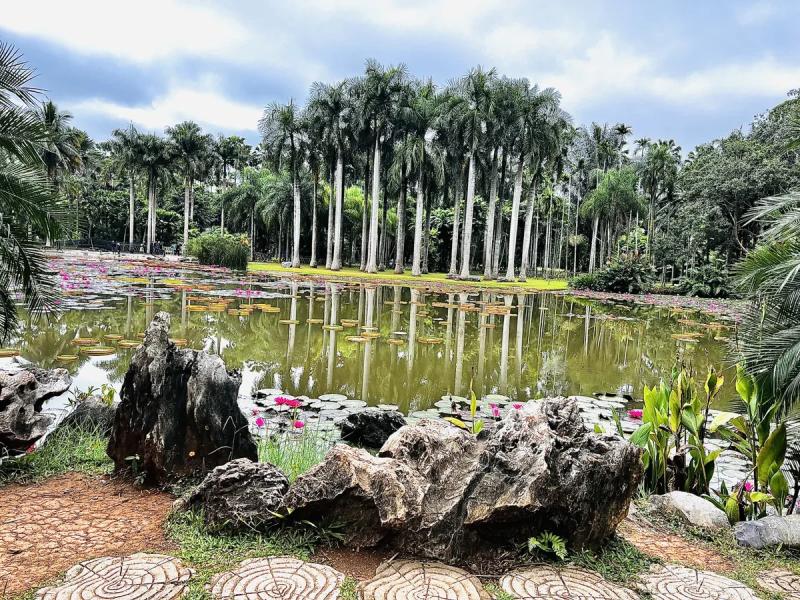
In the botanical garden in Xishuangbanna County, Yunnan Province, China. Photo: ATOR
But, of course, the main value of the largest botanical garden in China is plants. More than 12 thousand plant species have been collected here, 38 special zones have been created, divided by plant classes, and a 250-hectare rainforest has also been preserved.
Fragrant flowers and trees on a vast territory create a real peaceful oasis where you can enjoy a relaxing pastime. Well, you can and should snap photos, of course.
KUNMING CITY: STONE FOREST, LAKE, DELICIOUS PIES AND CHINESE COFFEE
According to the participants of the tour, they have not had such a large amount of bright photo content that appeared during their trip to Yunnan Province for a long time. The number of pictures for most exceeded a couple of three thousand. However, it is not surprising. In the Stone Forest alone, 78 km from the city of Kunming, we took at least a hundred photos.
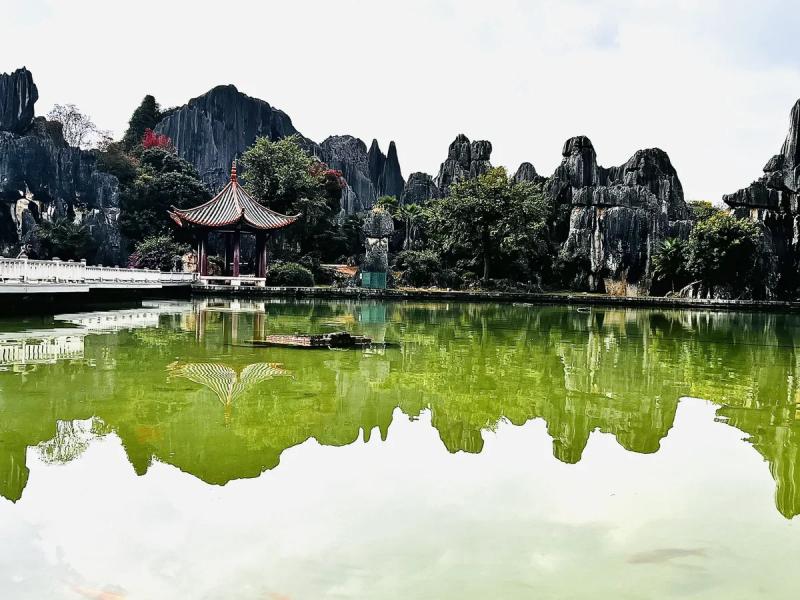
In a Stone forest near Kunming, China. Photo: ATOR
The Stone Forest is one of the six UNESCO World Heritage Sites in Yunnan Province. Excursions in the park are conducted by girls of the ancient Khani people, one of the 27 peoples of the I group of nationalities.
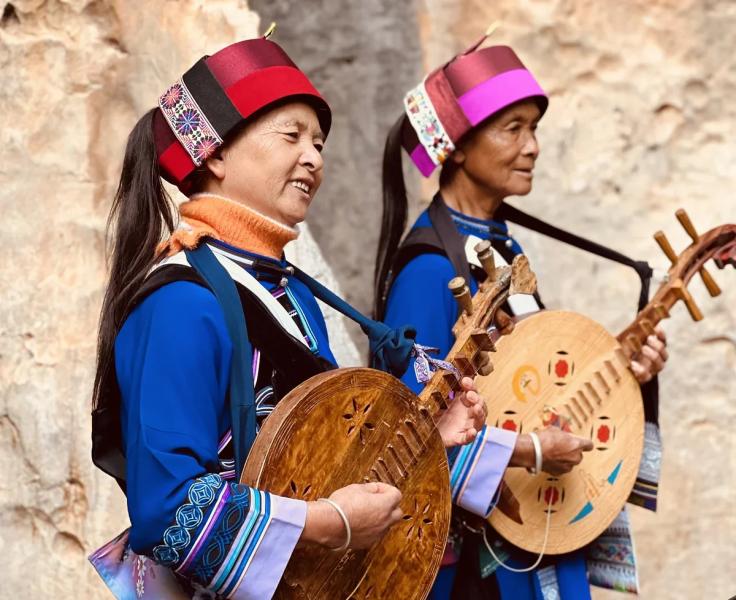
Representatives of the Han people in the Stone Forest, a UNESCO World Heritage Site, Yunnan Province, China. Photo: ATOR
The excitement in the park “covers” on the increase. First, an endless series of photos with representatives of the peoples And, as well as in their traditional outfits.
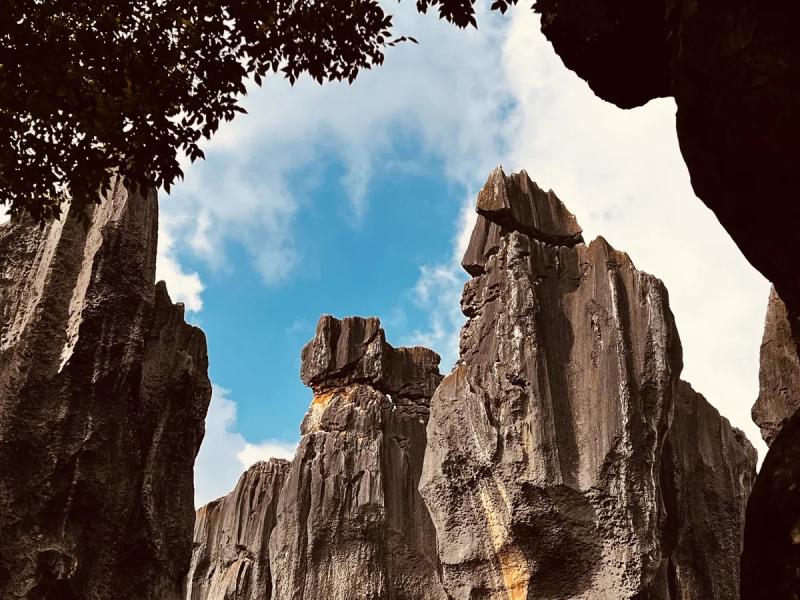
Landscapes of the Stone Forest, Kunming, China. Photo: ATOR
Then numerous selfies against the background of karst rock formations that were on the ocean floor millions of years ago, and then a fantasy world of high cliffs, lakes, caves.
Video file
The nature of this park is so beautiful that everything you see cannot be called anything but art. A real and sincere art, completely devoid of bohemian arrogance and all sorts of prejudices.
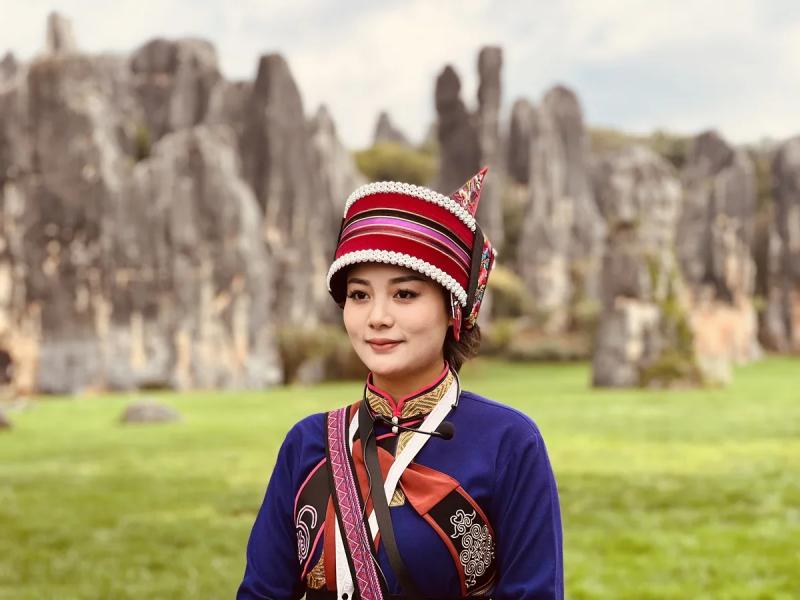
A Han girl in a Stone forest near the city of Kunming, Yunnan Province, China. Photo: ATOR
In fact, in many corners of Kunming and its suburbs, and Yunnan province in general, the handwriting of the world’s best nature artist is recognized and a special warmth is felt in everything.
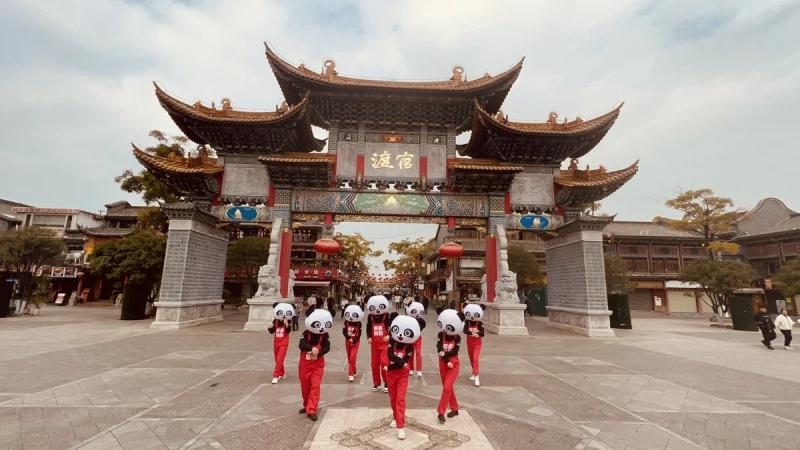
In the historical quarter of Kunming, the main city of Yunnan Province, China. Photo: ATOR
It can be traced even in the hustle and bustle of the city. On a walk through the historical quarter of Kunming, the eyes immediately “pull out” from the crowd a modest craftsman making wooden products and a boy eating cookies with a rose on both cheeks.
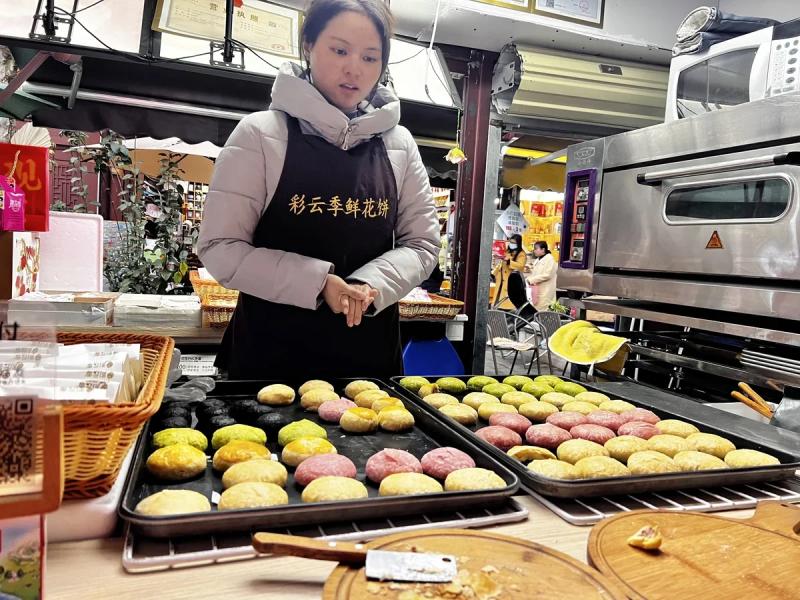
A girl prepares cookies with a rose in a cafe in the center of Kunming, China. Photo: ATOR
What a delicious cookie with a rose. There are many shops in the historical center of Kunming where such cookies are baked. You can take it with different fillings, buy coffee in a coffee shop and walk for a long time in such a company along the narrow streets. And then arrange a shopping trip with designer clothes.
Speaking of coffee. Yunnan Province is the largest coffee producer in China. Coffee, mainly Arabica varieties, has been grown here for more than a century. You can taste real local Chinese coffee in almost all coffee shops in this province.
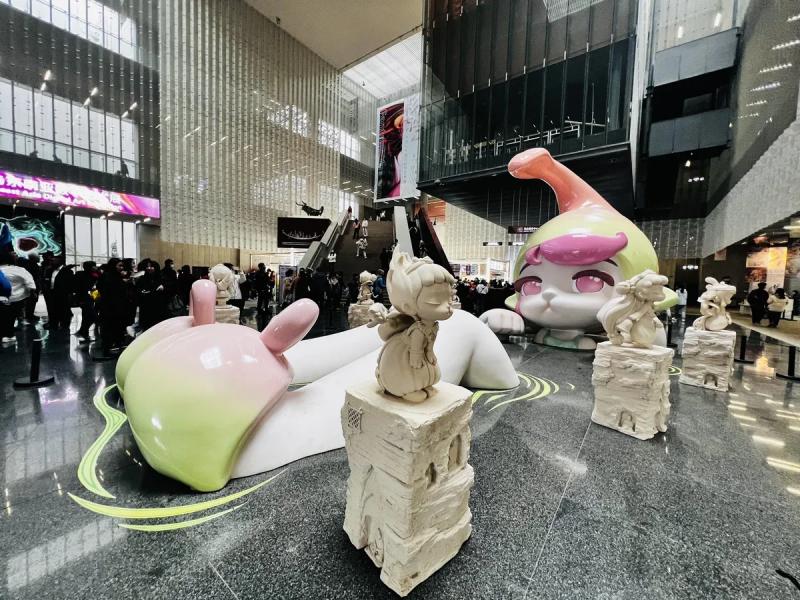
At the National Museum of Kunming, China. Photo: ATOR
It is very tasty to cook it in the National Museum of Kunming. The museum is large and interesting. After you get acquainted with the past and present of the province in the halls of the museum, treat yourself to a cup of fragrant coffee. Tested – the aroma of the drink makes you feel the smell of home comfort.

Mountain Lake of Dianchi in Kunming, China. Photo: ATOR
It is cozy at home, despite the crowded nature, and at the mountain lake of Dyanchi in Kunming, named after the ancient tribe of Dian, who once lived in these places.

Always hungry seagulls on Lake Dianchi, Kunming, China. Photo: ATOR
They come here for the sake of atmospheric panoramas and to feed the seagulls that come to these regions for the winter from the Far Eastern regions of Russia.
The combination of flying seagulls, the clear waters of the lake and the mountain slopes on the horizon makes this place, among other things, an ideal setting for stunning shots.
As for the scenery, I remembered the morning at the hotel in Xishuangbanna County. We arrived there late in the evening, when it was dark outside the window. At dawn, a stunning picture appeared before my eyes – tiled roofs against the backdrop of waking mountains, shrouded in fog. The view was simply unreal.
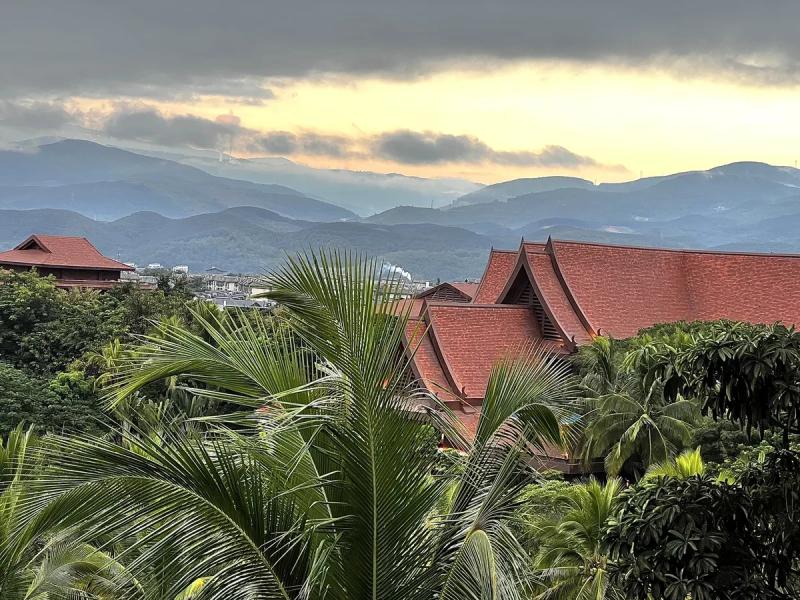
View from a hotel in Xishuangbanna County, China. Photo: ATOR
I had to ask myself out loud if this was definitely not a dream anymore. I had to ask myself exactly the same question about the entire Yunnan trip after returning to Moscow.
Alexandra Polyanskaya